Sorry, your browser doesn’t support embedded videos.
In depth story
Lasting results in rural development empower conflict survivors in Colombia
19/09/2024
Many have heard of Cartagena, Colombia, renowned for its vibrant walled city, festive environment and its
Palenqueras, colourfully dressed female fruit vendors carrying a bucket of produce on their
heads. But Cartagena is only the tip of the much bigger Colombian state, or “department”, of
Bolívar.
Picture a long, irregular strip of fabric with one end dipped into the turquoise Caribbean Sea and the
other end stretched out towards the foothills of the Andes. Bolívar unfurls like a lush tapestry –
verdant fields teeming with cassava, yams, corn and towering palms reaching out to a horizon dotted with
pastures where cattle graze peacefully.
But this beautiful landscape masks a complex past.
Scattered throughout the territory about two hours south of Cartagena are small towns that border a
network of marshlands. This intricate ecosystem of waterways and wetlands plays a vital role in the
environment but has also served as a treacherous battleground during Colombia’s long-standing
armed conflict.
“One knows that many countries live through war, but we in Colombia weren’t ready for
anything that happened,” says Saray Zuñiga, who doesn’t hesitate to say she was a victim of
the armed internal conflict that affected the South American nation for over five decades.
In 2016, Colombia reached a peace agreement with its largest guerrilla group. As part of the deal, the
Government committed to enhancing rural development and partnered with the Food and Agriculture
Organization of the United Nations (FAO) to help implement this goal.
Saray and her community now have the space to tell their stories of hardship, allowing them to heal from
the past and embrace a future filled with a newly found hope.
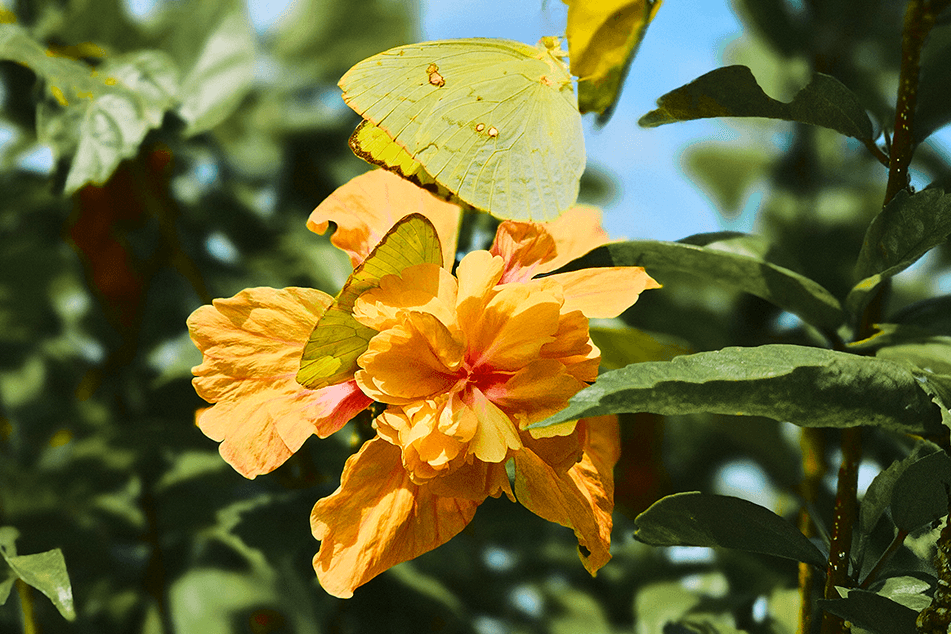
The scars of war, however, run deep in the region that witnessed some of the worst acts of violence in the
history of Colombia committed by paramilitary groups.
According to official figures, over 600 000 people in Bolívar were forcibly displaced between
1985 and 2019. The lush green valleys, once teeming with promise, now whisper the tales of the violence that
forced many to flee their homes and communities, seeking refuge in crowded cities or distant towns.
“I was displaced five times; my children grew in displacement,” Saray says, adding that she is
still, however, a proud Palenquera.

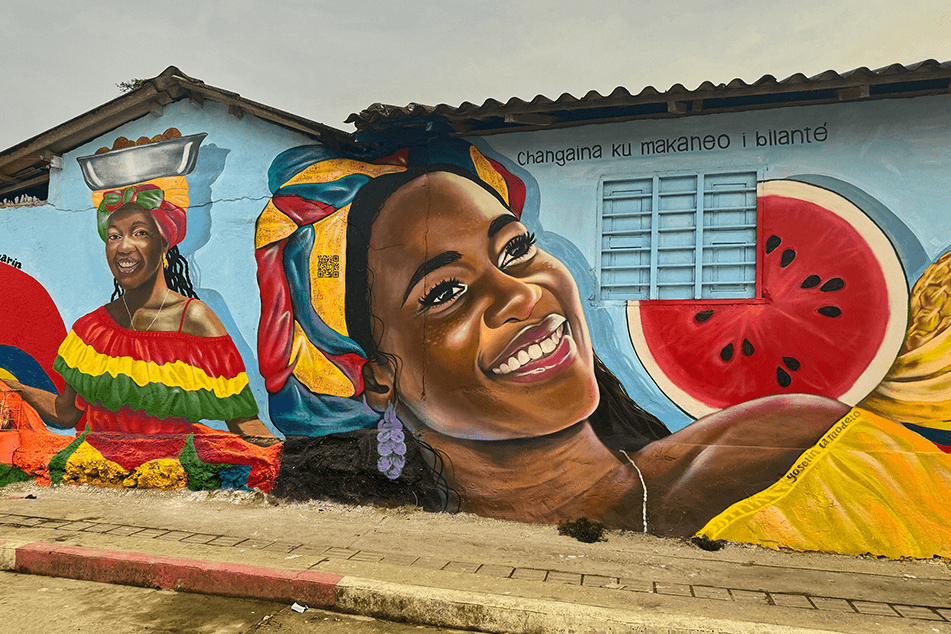
Palenqueras come from the San Basilio de Palenque communities, descendants of African slaves who in
the 1500s made their way to freedom and carved out a haven in the northern reaches of the now Mahates
municipality. Today, they carry UNESCO’s recognition as Intangible Cultural Heritage of Humanity.
They have a long-standing agricultural and artisanal tradition that provided sustenance and fostered a
strong connection to the land. Today, many Palenqueras continue to work as farmers, upholding their
heritage and contributing to Colombia’s agricultural landscape.
Saray and her family were forced from the region their ancestors, who fought fiercely against Spanish
colonial rule, once believed would forever be a sanctuary of peace. They couldn’t return for 20 years.
Yet, the reasons for their exile remain vivid in her memory, as clear as if they happened yesterday.
“Aim, and shoot! Aim and shoot!’ Those men kept yelling while threatening my children who were
forcibly lined up on the floor in front of my home,” describes Saray. “They wrongly accused me
of hiding weapons. I said, “The only weapons I have are my six children, I am a farmer. My girl was
only three years old. What followed… what followed was even worse…,” tears well in the 55-year-old
mother’s eyes as the memory takes hold.
Saray was one of many women farmers, who while holding the legacy of the land in Mahates, witnessed their
loved ones killed or threatened, their fields trampled, and their harvests stolen.
“We in Palenque never thought this could happen, that there would be massacres and rapes. We were
persecuted, and many of my friends at the time are not alive today.”
When she finally went back to her farm in the village of Toro Sonrisa in 2011, she found the soil and trees
destroyed, the animals gone and worst of all, the community broken.
A community uprooted by conflict
Just a few kilometres away, in the village of Paraíso, Ana Herrera also had her dreams shattered by the
conflict. The dairy business her community had painstakingly established was pulled apart.
In the past, Ana and other women and men cattle owners in the village had been forced to sell to buyers who
came directly to the community, offering whatever price they deemed fit. This system exploited the
farmers’ lack of access to proper commercialization channels.
With the support of the government, however, they set up a dairy association, ASOCUPAR, to demand fair
prices.
“We didn’t make a dime for three months…,” she recalls, adding that slowly but surely,
they began to see the results of making the leap to organize themselves.
They even started to process the milk to turn it into cheese. Soon enough they found reliable buyers and
were able to build with their own hands a modest headquarters for their business.
“But as some like to say, good things don’t last. In 2001, things started to get complicated.
Those men with backpacks started arriving… Then the dead appeared. Two dead here, another three there, one
right here where I am talking to you right now. Who would stay here in that situation?”
Ana left her village the day after they finally reached her farm. “I saw those men coming… I
thought: “We are now only in God’s hands’… My legs were shaking because I had never seen them
in person.”
They occupied her house for a whole day and night and even threw a party while she sheltered in her room.
“If that kiosk right there could talk,” she says.
When dawn finally brought quiet, Ana knew it was time to leave. With a heavy heart, she abandoned her home,
not daring to look back for ten long years.

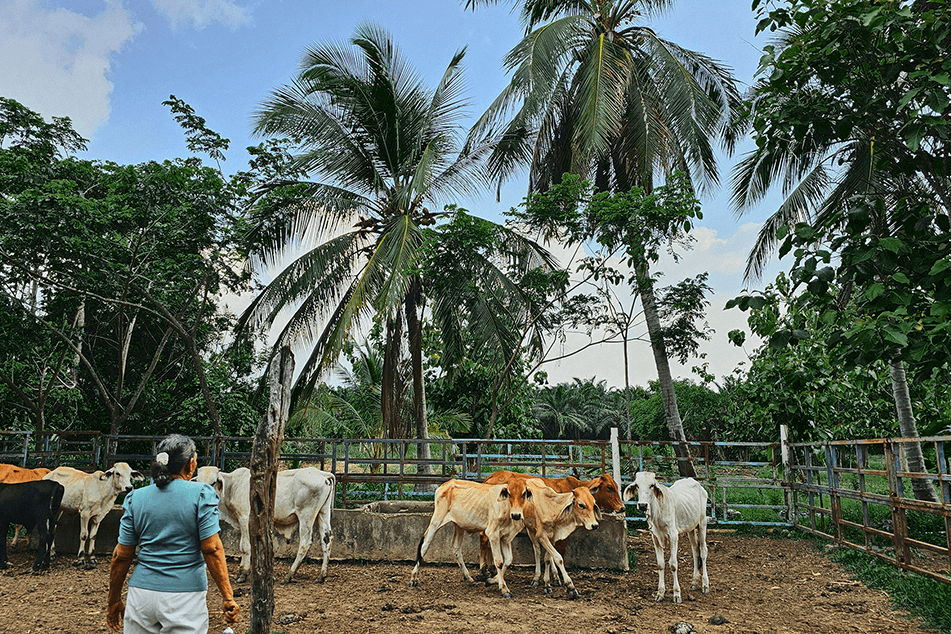
The return
Both Saray and Ana returned to Mahates in the first half of the 2010s, when the situation had improved enough
for them to come back, but a more stable situation was still years away.
Ana came back to find the community centre and cheese factory they had built with her association physically
destroyed.
“My farm was pretty much on the ground too. My coconut trees were dead, and my other trees and crops
were gone. After so much sacrifice my husband and I went through to build our home, we had to start over
from scratch. It has been a long time, but I don’t think I have fully recovered from this.”
“When I came back, everyone was feeling defeated,” Saray adds.
In 2016, the peace deal in Colombia brought dramatic changes to the lives to both Ana and Saray.
They found themselves sitting across from each other at the same table – but not just any table: this one
belonging to the Victims Unit, tasked with offering reparations and solace to the millions of Colombians
forever marked by the war’s brutality.

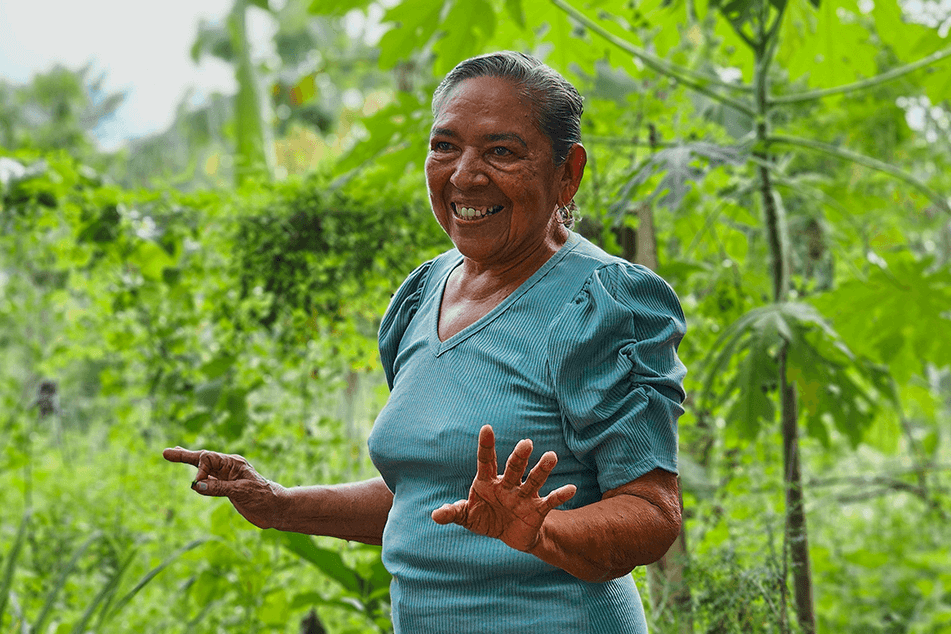
The return of peace
The signing of the United Nations-backed Agreement to
End the Armed Conflict and Build a Stable and Lasting Peace in September 2016, marked the end of
more than 50 years of armed conflict between the National Government and the Revolutionary Armed Forces of
Colombia – People’s Army (FARC).
The Agreement aimed not only to end the conflict but to address issues such as rural development, political
participation for former rebels and crucially, transitional justice mechanisms, including the Victims Unit.
“With the signing, Colombia began a process that aimed to consolidate peace in the territory. The
first point established in the Peace Agreement was the Comprehensive Rural Reform, and FAO was officially a
partner on that point. In this context, FAO supports the Government of Colombia precisely in how to advance
this rural transformation for the consolidation of peace,” explains Agustin Zimmermann, FAO
Representative in Colombia.
As a companion organization to the Rural Reform process, FAO generated an agenda of advocacy and provides
technical support for different national entities, including the Ministry of Agriculture and Rural
Development, on issues such as sustainable agriculture, land governance, value chain development and food
security.


Zimmermann explains that, throughout the past 20 years, Colombia has improved in the Human Development Index.
Poverty rates have decreased nationally, and improvements have been seen in public health and education
metrics, among other areas. However, there are still significant disparities and inequities at the
territorial level, particularly with regard to food security.
“This is the main challenge that exists in the consolidation of the peace process, and it is a
challenge that mainly affects the rural sector,” Zimmermann adds, underlining that this is why
FAO’s mandate, the transformation of agrifood systems, is so important for the nation.
In Colombia, FAO works with the government and farmers toward sustainable rural development as a key
element in reducing hunger and malnutrition. The Organization further committed to this goal in January
2023, with a letter of cooperation signed by Colombia President Gustavo Petro and FAO Director-General Qu
Dongyu, reaffirming the importance peace and security and its connection to the human right to food.
Territorial transformation, resilience and sustainability
Along with the Colombian Departments of Cordoba, Nariño and Putumayo, Bolívar was chosen as one of the
implementation sites of the FAO-Sweden joint project Territorial Transformation, Resilience and
Sustainability.
The project focused on improving rural livelihoods by strengthening agricultural production with diverse
crops and promoting diverse entrepreneurial ventures aligned with the unique strengths of each region and
its families: sustainable livestock farming, avocado cultivation, coffee production, pepper farming, guinea
pig breeding, panela sugarcane and others. It also focused on encouraging sustainable land use and resource
management, establishing new infrastructure to support production and sales, fostering collaboration among
diverse stakeholders, empowering women through skill development and leadership opportunities and building
community resilience to disasters.
The project further encouraged cultivating food for personal consumption, resulting in over 2.612 tons of
food produced, fostering food security, economic stability and self-sufficiency.
“The projects that we are implementing in the country, such as this one, have as their main focus
precisely the consolidation of peace by allowing farmers to return to their territories and have productive
and economic opportunities to stay,” explains FAO Representative Zimmermann.
Between 2022 and 2023, the 27 farmer associations that participated in the FAO-Sweden initiative increased
their productivity on average by 137 percent and boosted their sales by 41 percent, more than doubling their
income. The initiative benefited over 3 500 rural people and ran for over three years finalizing in March
2024. Specifically in Bolívar, the project impacted over 500 people and four organizations in the
municipalities of Mahates, Maria la Baja and Carmen de Bolívar.
“What the beneficiaries tell us is that the project has generated, apart from the most tangible
aspects of supporting productive chains, a very positive social dynamic in the territory that has allowed
them to experience a return to peace,” Zimmermann underlines.
Indeed, the project wasn’t just about enhancing farming techniques or market access. It was about
farmers reclaiming their land, fostering resilience and sustainability and ensuring that the fertile soil
they lived on birthed not just crops, but a future free from fear, a future they could cultivate, not just
for themselves, but for generations to come.
“FAO came to our territory to help us farmers get rid of fear. They brought us a technical team that
came to work and teach. When they arrived, we hadn’t dared to produce cheese again; we were afraid.
And they asked us: “What is wrong if you already know how to make your product?’” Ana
recalls.

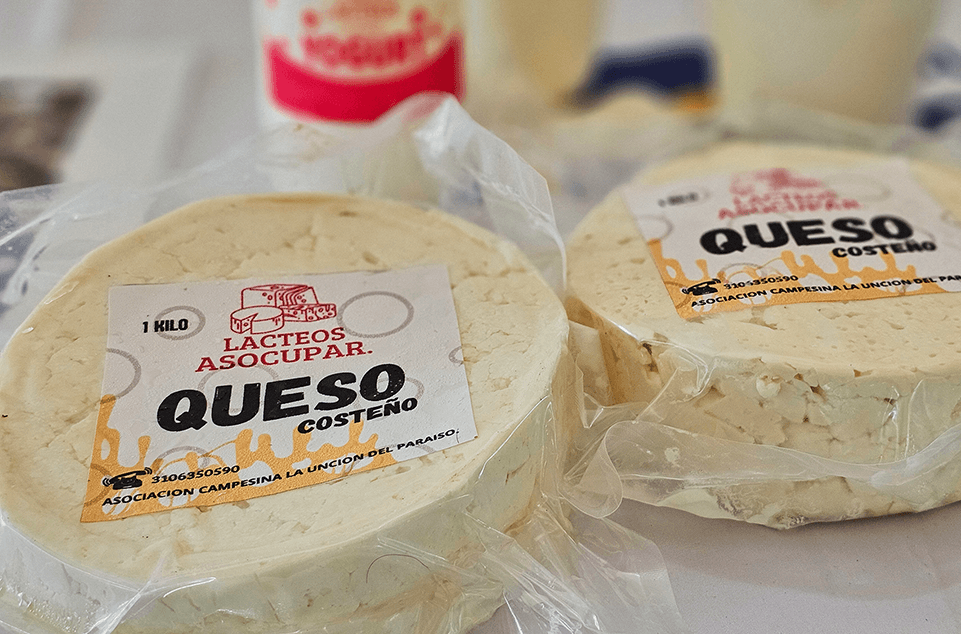
With FAO’s support, ASOCUPAR, the association Ana represents, was able to rebuild its center for
processing dairy products and enhance their production and commercialization avenues, even securing a deal
with a renowned restaurant chain in Colombia.
Now the dairy association not only buys milk from its members, or even the village, but it has started
buying milk, at a fair price, from other towns further away, helping the region improve livelihoods. The
association has also expanded their range of products to yoghurt and whey.
But this result came from the effort and commitment of her community in Paraiso, willing to recover the
knowledge they already had, and at the same time, be open to learning from FAO about things they had never
even heard of before, such as sustainable livestock management.
“Before, we practiced extensive livestock management, meaning we had big expanses of deforested land
for the cattle. Now we work on arborizing everything to make “living fences’. We learned that
with the trees the cattle get shade and the fruits and seeds also feed them. Not only that but this also
helps create biological corridors for other animals to return to the territory,” Ana explains while
proudly pointing to her cows hiding from the midday sun under the trees they now have. “Plus, they are
now producing double the milk than before,” she adds.

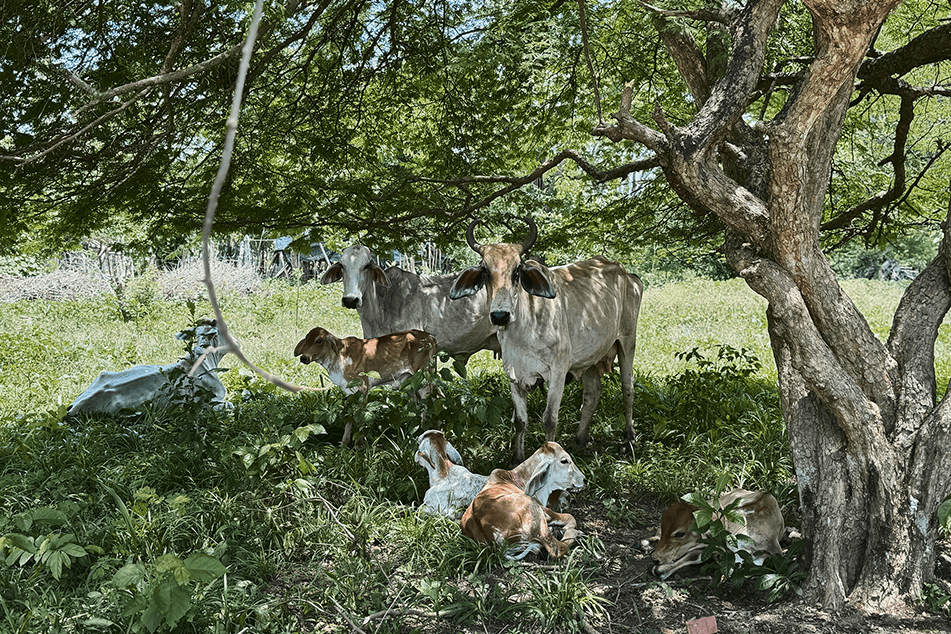
A dream come true that protects the environment
“The project focused a lot on the social issues and the issue of generating income but also made sure
that this income would come from sustainable models, not extractive systems. This allows for better
production but also for taking care of the environment,” says Alfredo Bray, FAO technical coordinator
for the project.
He too was born and raised in Bolívar and unfortunately, is no stranger either to the violence and
displacement the area faced. He worked hand in hand with the communities, who even months after the end of
the project implementation, don’t hesitate to greet him with a warm hug when they see him.


Bray emphasizes how the initiative improved the natural environment by allowing the local fauna and flora to
return while increasing agricultural production and income. For farmers, this meant to stop cutting and
start planting more trees, to sign local conservation pacts and to receive training on how to manage their
natural resources responsibly while enhancing their resilience to extreme weather events. For example, they
learned to cultivate and stock fodder to feed their cattle even in difficult climate conditions such as
extreme heat and drought.
At the same time, the project impacted the way rural families connected by promoting the exchange of
experiences and working as a network of organizations, battling the isolation fueled by the displacement.
“This is what we mean when we talk about transforming the territory,” he says.
The Toro Sonrisa Ecological and Artisanal shop & restaurant, an oasis located in the greatly transited
highway that connects Cartagena with the south of Bolívar, might be the perfect representation of his words.
“They [FAO] came and asked us what it was that we wanted, what was our dream. And I raised my hand and
said: “We want to have a place to be able to sell our products,” recalls Saray while wearing a
traditional dress and dancing to Palenque music at the shop her association, ASOPROVEGUA, now manages. The
shop called “Paraje ri Kumina’ brings together the products of all other sister associations in
the area and in her words “replaces the intermediaries to whom the farmers always have to sell their
products.”
Palenqueras traditionally work selling the fruits and vegetables they grow and the traditional sweets
they create in towns and cities outside of Palenque, sometimes being away from their homes for weeks at a
time and leaving their partners and children behind to avoid such intermediaries. For this reason, she and
her companions had always dreamed of having something close by that could both make money and benefit the
community while also enabling them to live close to home.
“Now we have our restaurant with our traditional food and our shop, and we are working with other
sister organizations in Bolívar.: Paraiso with the cheese, Roma with honey and avocado, for example,”
Saray explains.

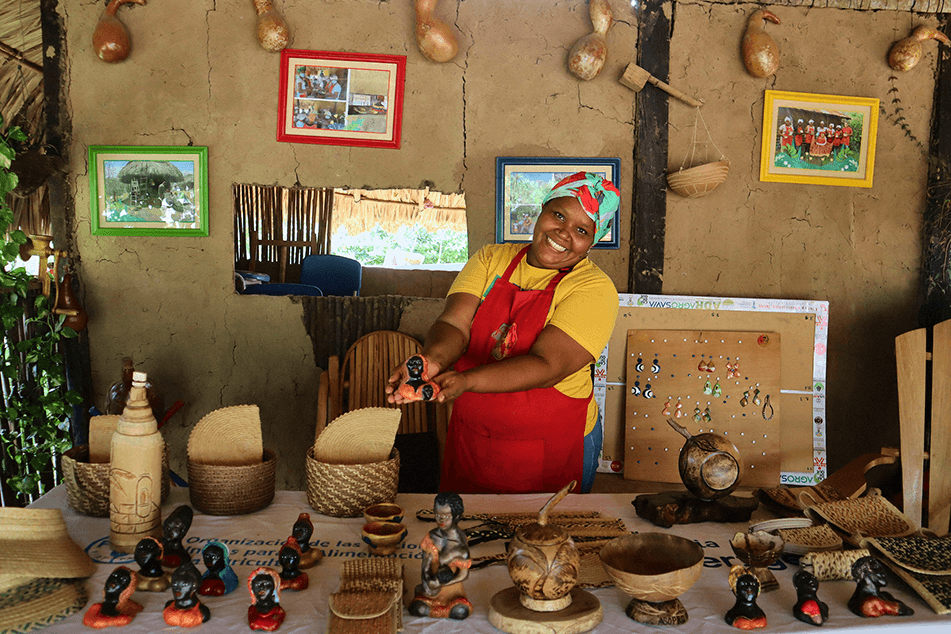
Saray, brimming with excitement, displays the traditional Palenque sweets, cocadas, they make for
sale.
Cocadas are made with grated coconut, panela (unrefined cane sugar) and spices like cloves and
cinnamon. The mixture is simmered into small, round candies with a chewy texture, an intense sweet flavour
and a rich, caramel-like consistency. They are enjoyed as a snack or dessert and are a cherished part of
Palenque culture. “Who eats one, eats two!” Saray exclaims.
Her enthusiasm carries us to the kitchen, where five women, all conflict survivors, work diligently. Two of
them are her daughters, who returned from the city, leaving displacement behind to join the venture. The
shop and restaurant operate on a rotation system, ensuring all community members benefit as different groups
of women take turns working each week.

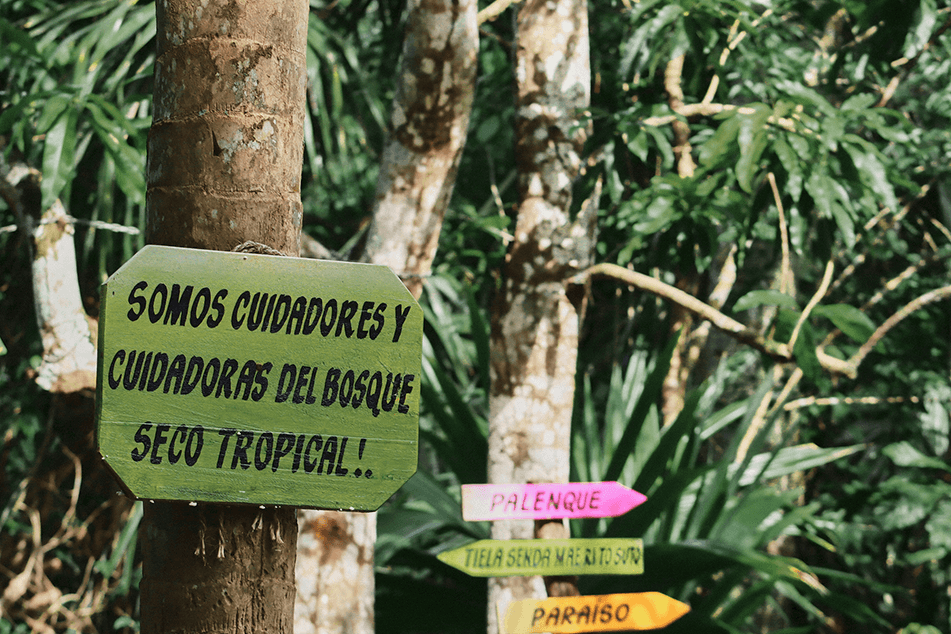
Also, as part of the FAO project’s initiative to boost tourism and protect biodiversity, the
restaurant spills onto an eco-park, all on land donated by one of the farmers in the community. Paths that
lead to a playground are bordered by fruit trees and plant nurseries. Vibrant signs with messages about
sustainability are strewn all over. A clean creek with the melodies of birdsongs and the lively calls of
monkeys in the trees is overlooked by a viewpoint.
“This park is meant to protect our animals. We have iguanas, howler monkeys, parakeets, parrots and
more. To be sitting in this haven after everything I lived makes me feel at peace. This is happiness; we
have recovered our tranquility,” says Saray.

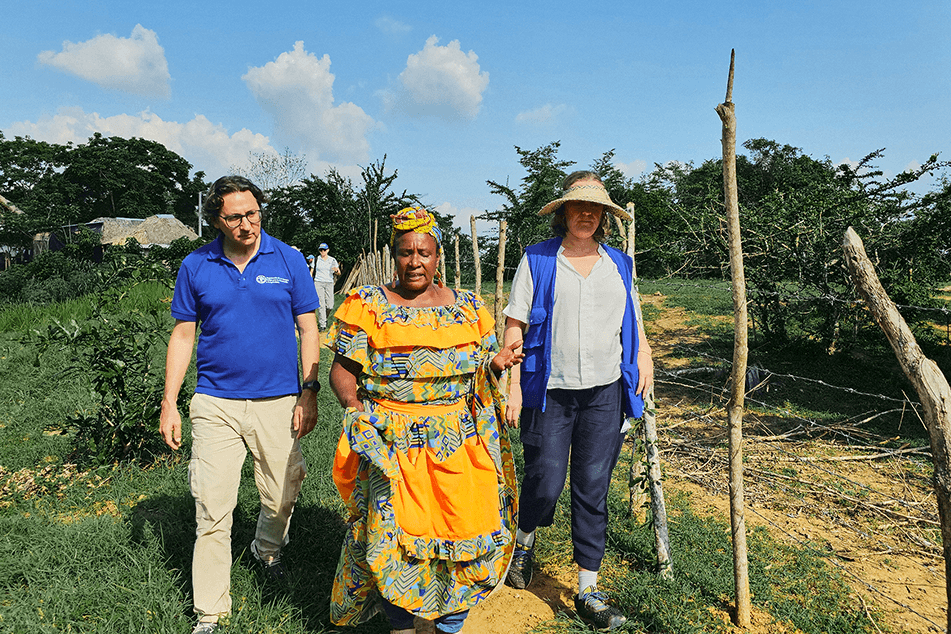
In addition to the results of the project that people can see in terms of infrastructure and environmental
restoration, there are the ones that the community now carries inside.
“It is very emotional for me to see and hear from the participants, the impact of the work of these
women and men,” says the Ambassador of Sweden in Colombia, Helena Storm, adding that 2024 marks 150
years of cooperation between Sweden and Colombia, as well as 10 years of supporting FAO in the country.
“I have seen firsthand the power, the potential, the strength, the resilience that these communities
have. I am convinced that Colombia has many possibilities to achieve sustainable development and lasting
peace,” Storm underscores.
With Sweden as a partner, FAO continues to replicate the model of territorial agricultural development and
peacebuilding in other regions of the country. A new initiative is now underway until 2026 in the Department
of Cauca in the south of Colombia.
“It has been months since the project finished and we are seeing that all the associations continue
progressing by themselves, even with alliances with the private sector. The most beautiful thing about this
project has been finding that this dynamic is working and is sustainable,” complements FAO
Representative Zimmermann.
But for Ana and Saray, the project’s true beauty transcends sales and economic growth. It’s the
rediscovered unity now pulsing through their communities.
“We are standing in the plot that belongs to one man who is family, who didn’t mind giving the
community an entire and very valuable piece of land next to the highway. This has brought us together so
much that we don’t even consider ourselves partners, but brothers. We are a family again. The pain of
one is the pain of the other, and we are proud to be who we are: farmers.”
Learn more
Images are for reference only.Images and contents gathered automatic from google or 3rd party sources.All rights on the images and contents are with their original owners.



Comments are closed.